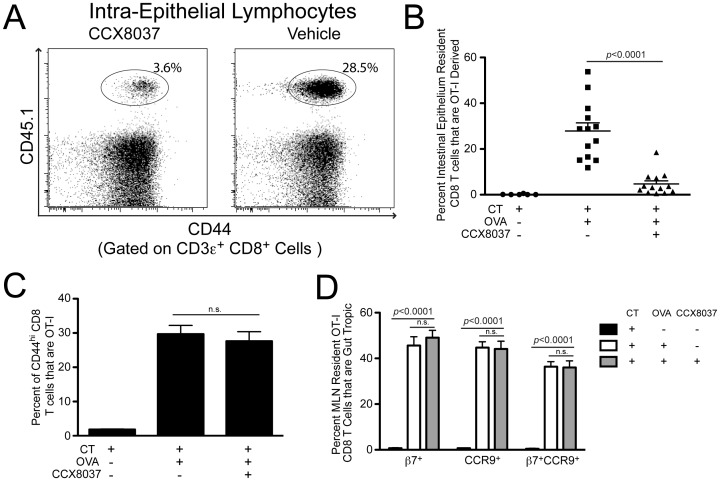Figure 2. CCX8037 reduces accumulation of OT-I CD8 T cells in the intestinal epithelium without affecting gut homing tropism, imprinting and proliferation.
Animals were injected with 3e6 OT-I CD8 T cells, and immunized 24 hours via oral gavage with either 10 µg Cholera Toxin (CT) only, or CT + 25 mg Ovalbumin (OVA). Animals given OVA were also injected subcut. every 12 hours for the course of the study with CCX8037 (30 mg/kg) or vehicle. Mice were sacrificed for analysis 5 days post immunization. Mean and SEM shown for each data point, p values indicate Bonferroni multiple comparison post test. (A) Representative flow cytometry plot showing the accumulation of CD44hi CD8 T cells, and gating of OT-I (CD45.1) cells in the intestinal epithelium. Plots are pre-gated on CD3ε+/CD8α+ cells. (B) Quantification of OT-I CD8 T cell accumulation in intestinal epithelium. Mice fed CT only did not exhibit substantial OT-I CD8 T cell homing into the intestinal epithelium. Animals fed CT + OVA and treated with vehicle had significant OT-I CD8 T cell homing, with 27.9% of all resident CD8 T cells being OT-I derived. Animals fed CT + OVA and injected with CCX8037 exhibited significantly reduced intestinal epithelium accumulation of OT-I CD8 T cells, to 4.7%. N = 13 mice for CCX8037 and vehicle groups, and 6 for CT only. (C) CCX8037 did not affect the proliferation of OT-I CD8 T cells in MLN after Ag exposure. In animals exposed to CT only, OT-I CD8 T cells composed 1.8% of all CD44hi CD8 T cells. In animals exposed to CT + OVA, there was no significant difference in the percentage of CD44hi CD8 T cells that are OT-I between those treated with vehicle (29.7%) and CCX8037 (27.6%). N = 6 for CT only treated mice, N = 13 for Vehicle and CCX8037 treated mice. (D) Generation of gut homing molecules on OT-I CD8 T cells in MLN was not affected by CCX8037. Animals not fed OVA antigen had significantly lower β7+, CCR9+, or β7+CCR9+ expression. However, the expression of gut homing molecules was not significantly affected by CCX8037 treatment, compared to vehicle. OT-I CD8 T cells of vehicle and CCX8037 treated mice were 45.6% and 49.1% β7+ respectively, 44.7% and 44.1% CCR9+ respectively, and 36.3% and 36.1% β7+CCR9+ respectively. N = 13 mice for CCX8037 and vehicle groups, and 6 for CT only.

